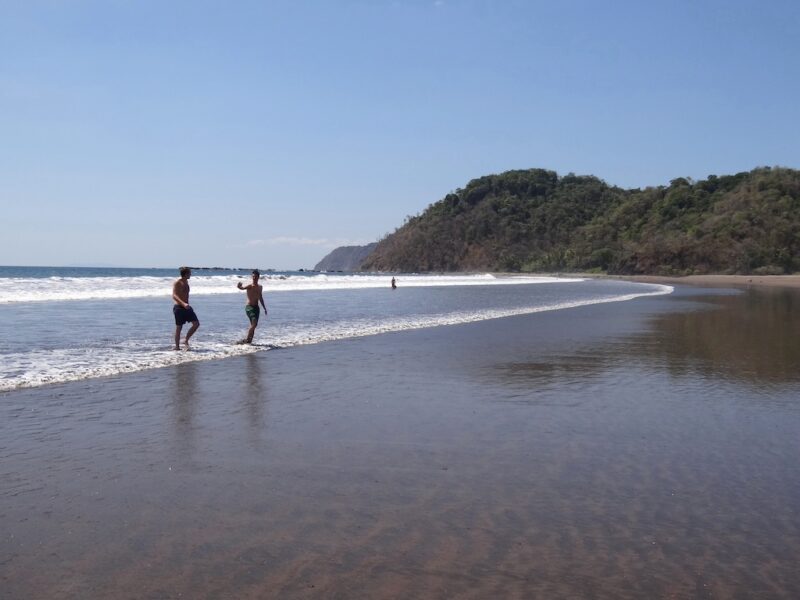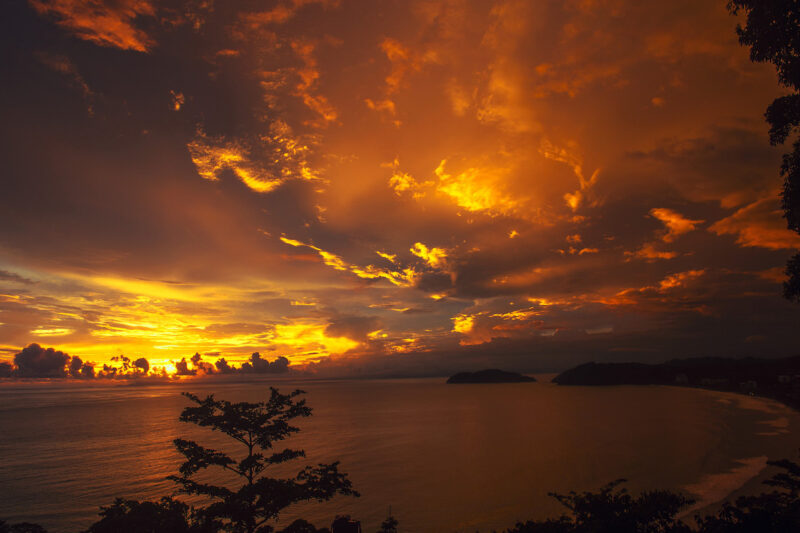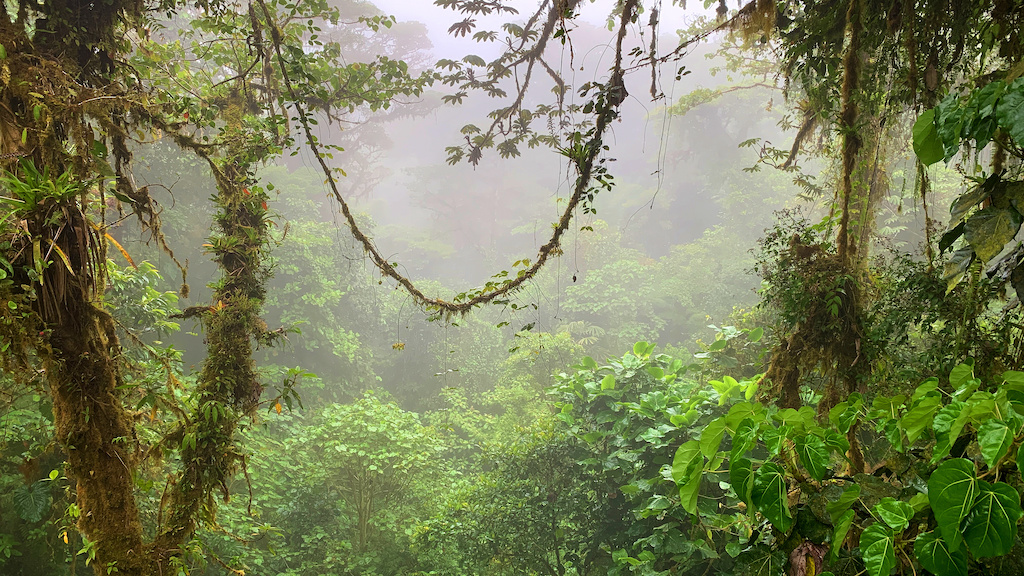«Without a doubt, Costa Rica is a country with two distinct seasons.»

The Dry/High Season—December through April
Costa Rica’s high season presents a splendid opportunity to explore the country’s exquisite natural beauty and indulge in thrilling adventures. The favorable weather conditions during this period make it convenient to discover the rainforest and observe the astounding wildlife. Additionally, visitors can enjoy the dry conditions in areas such as Guanacaste and Nicoya. For those seeking to escape the cold and snowy conditions in their home countries, the warm tropical beaches offer an ideal paradise, with extra hours of sunshine every day. Surfing enthusiasts can take advantage of the bigger and more reliable ocean swells to have an exceptional experience.
Despite the high influx of visitors, the high season offers endless opportunities for entertainment and relaxation. All attractions remain open for extended hours, and visitors can unwind with live music performances or revel in the lively nightlife. Notably, although the period coincides with Christmas, Costa Rica refers to it as summer, symbolizing the warmth and merriment that the high season brings.
The Rainy/Low/Green Season—May through November

The tourism industry in Costa Rica has coined the phrase «Green Season» to refer to the low season or winter period in the region. This term is preferred over «rainy» because of its more positive connotations. However, experienced travelers to Costa Rica are well aware that the Green Season has its own unique charm. During this period, prices are generally lower, crowds are less overwhelming, and while the mountainous rainforests may receive heavy rainfall, it is not uncommon to experience sunny beach days.
Despite its advantages, the Green Season also presents certain challenges. Areas such as the Atlantic slopes, northeast, and southwest receive a significant amount of rainfall, which may make travel difficult. The Osa Peninsula is particularly affected, with many lodges closing during September and October due to heavy rain. Additionally, the region experiences shorter days, with the sun setting around 6:00 p.m. year-round.
Overall, the Green Season in Costa Rica presents a unique opportunity for travel and exploration. While it may not be suitable for everyone, it offers an alternative experience from the peak tourist season.
«Here are some important things to keep in mind if you plan on visiting Costa Rica during the dry/high season.»
If you’re planning a trip to Costa Rica, it’s important to keep in mind that this is the high tourist season, which means it’s also the most crowded and expensive time due to a high influx of tourists and snowbirds. While February is typically the driest month, March and April tend to be the hottest. However, temperatures remain relatively stable throughout the day and night.
To ensure that you have a smooth and hassle-free trip, it’s recommended to book your hotels, car rentals, and tours at least 2-3 months in advance. But if you’re planning to visit during Christmas, New Year’s, Spring break or Easter, it’s recommended to book at least 4-6 months in advance, as these are peak season times. In fact, some hotels and vacation rentals get booked as much as 6+ months in advance!
While temperatures can soar well into the 90s F (32 C) and above on the Northern Pacific coasts in February and March, it’s a bit cooler on the Central and South Pacific Coast and Caribbean Coast, but more humid. It’s drier on the North Pacific coast (Guanacaste coast and Nicoya Peninsula like Santa Teresa) but with higher temperatures. San Jose, Central Valley and mountain area temperatures hover around the high 70s F (24-26 C) during the day.
It’s worth noting that even during the dry season, rainforest areas such as the Caribbean Sea, Central and South Pacific Coast, and Northern Highlands may experience rain randomly. For instance, we visited Dominical in February once, and it rained heavily for 2 days straight. So, it’s always a good idea to be prepared for any kind of weather.
Suppose you are considering a trip to Costa Rica during the rainy season, also known as the green season. In that case, it is important to be aware of the potential challenges and limitations that may arise. These may include flooding, landslides, and restricted outdoor activities. As such, planning and taking all necessary precautions is essential to ensure a safe and enjoyable trip. However, the lush tropical landscape of Costa Rica during this time of year is a breathtaking sight to behold, and with careful planning, you can make the most of your experience.

A few tips.
During the rainy season in Costa Rica, temperatures do not vary significantly from the dry season. Although it does get more remarkable, the difference is only around 5-10 degrees Fahrenheit on average. The rainiest month across most of the country is October. However, places such as the Central and South Pacific coast, the mountains, and the Northern Lowlands can also experience heavy rainfall in May, June, September, and October.
On the Caribbean coast, October is considered a summer month, specifically in Tortuguero and Puerto Viejo de Talamanca. In coastal regions, a typical day during the rainy season starts off dry and cloudy in the morning, with intermittent rains in the late afternoon, evenings, and nights. In mountainous and rainforest areas, it may rain in the early afternoon or even mornings. Although you may still experience sunny mornings during the rainy season, it can get cloudy quickly.
As rainfall tends to increase in the late afternoons and nights, some tourist attractions such as Arenal Volcano National Park may close early due to lightning and thunderstorms. It is advisable to rent a 4×4/4wd for your itinerary and check road conditions frequently, as heavy rains in remote areas may cause some roads to become impassable or bridges to collapse.
During the green season months of September and October, some businesses may close, have limited availability, or undergo construction. However, hotel prices are significantly cheaper, and some tour companies offer green season rates. In July, there is a «little summer» where it stops raining and dries up for a week or so. This typically occurs around mid-July, which is also a busy month due to families coming during summer vacation. If you plan on visiting in July and August, it is best to book your car rentals and services at least two months in advance.
